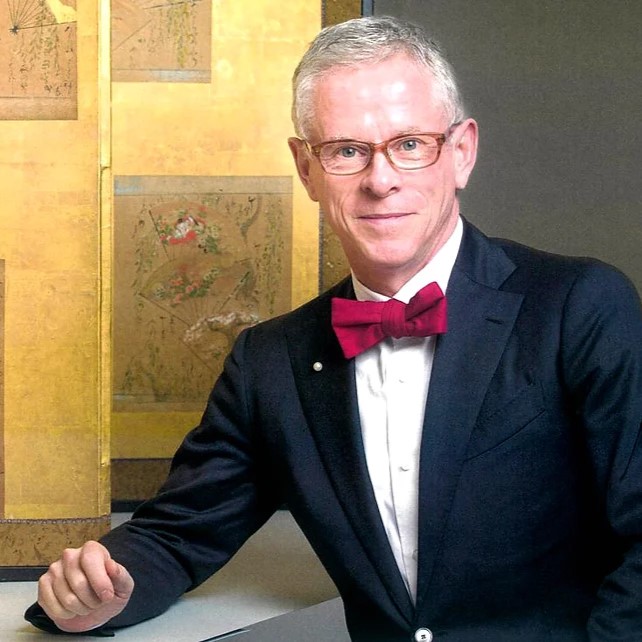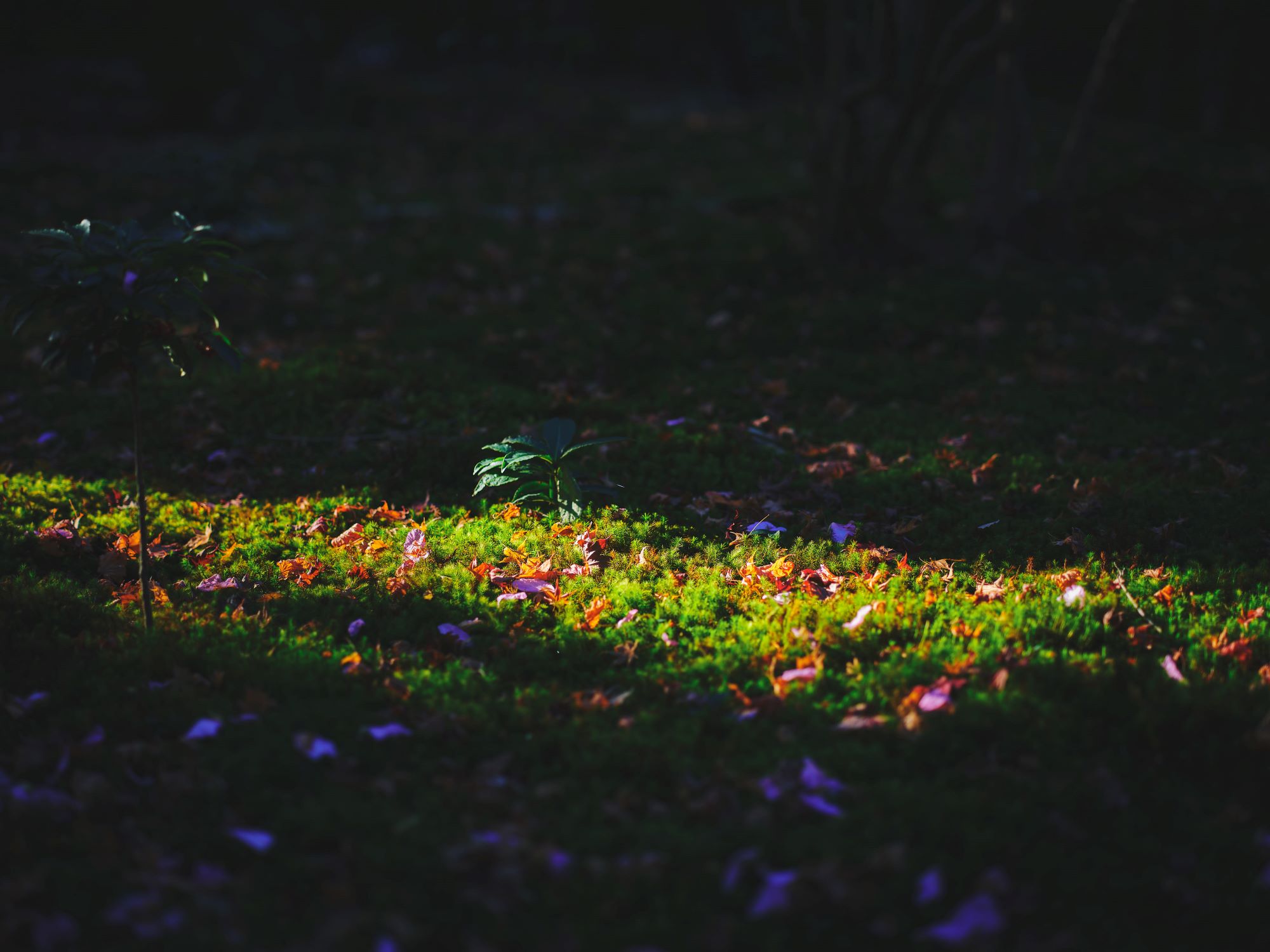2024.10.20
Winds of Gold—One Hundred Views of Saihoji Vol. 6
Peter MacMillan / a translator, scholar, poet
In this series of essays on Saihoji the renowned translator of Japanese poetry and poet Peter MacMillan records his impressions of and reflections on his visits to the garden throughout the four seasons. We hope that through these essays you the readers and fans of Saihoji can feel as if you are also present in the magical garden even when you cannot visit us.
Lessons from the Monkeys
On my last visit to Saihoji it was a cloudy day, and the clouds overhead made the colors and contrasts so clear, the shadows long, and the surface of the water highly reflective. As I walked around the pond in the long and defined long shadows and the clear light, I felt a gorgeous clarity brimming in my heart. And also a keen sense of the animal and natural life of Saihoji.
For example, monkeys often visit Saihoji and today I saw a whole family of them led by the boss monkey. The baby monkeys still do not know well all that is involved in climbing and they sometimes climb up trees where the branches are still fragile, and the branches break, and the baby monkeys fall to the ground. Deer and badgers also visit the garden, and many birds come too, such as the crane and the heron and ducks.
Visitors to Saihoji most likely have heard birdsong, but may not have seen so many birds or animals on your trips to the garden. Actually, the garden is open to visitors only for a few hours every day and then it returns to being embraced as part of the mountainside. When the visitors leave, the animals come out to play and enjoy their own time in the garden. While being one of the most carefully maintained and manicured gardens in Kyoto, the presence of animals is an important reminder that Saihoji is also a jewel within nature.

The mountainside that embraces Saihoji extends up into a mountain range that extends down and up and down and up and on and on, becoming valleys and rivers and plains and mountains again that spread out in all directions till they cover the whole of land of Japan. Then the firmament continues under seas and oceans that surround the country spreading to other islands and continents all the way around the world, connecting Saihoji eventually to you—wherever you may be in the world!
As I walked along the sky cleared a little, and great mass of cloud broke up into groups of small clouds that drifted here and there and I felt that just like the land, the clouds also spread all over the world and when they dissolve, they reveal the moon and the sun and the stars that we all share with all things in the universe.
You may think of Saihoji as a separate discrete enclosed space that is cut off from the world that you come to visit for a short time, but it is connected to the rest of the world and is always close to you, a point of reference for your personal growth as a citizen of the world, and a symbol of everything in the world, as everything is connected to each other and the realization of that promotes peace and harmony in our shared world.
Peter MacMillan
Peter MacMillan is a prize-winning translator, scholar, poet, and President of The Moon is a Boat Co., Ltd.
His translation, One Hundred Poets, One Poem Each (Hyakunin Isshu), was published in 2008, winning prizes in both Japan and the United States. After that, he completed an English translation of The Tales of Ise (Ise Monogatari), which was published by Penguin in 2016. He has also published a collection of poetry entitled Admiring Fields.
Awards:
Recipient of the Donald Keene Center Special Prize for the Translation of Japanese Literature
Recipient of the 44th Special Cultural Translation Prize from the Japan Society of Translators
Nominated for the PEN Award for Poetry Translation for the English translation of The Tale of Ise (Ise no Monogatari)

Up next
Most read

Your Heart
"Life and Death"





